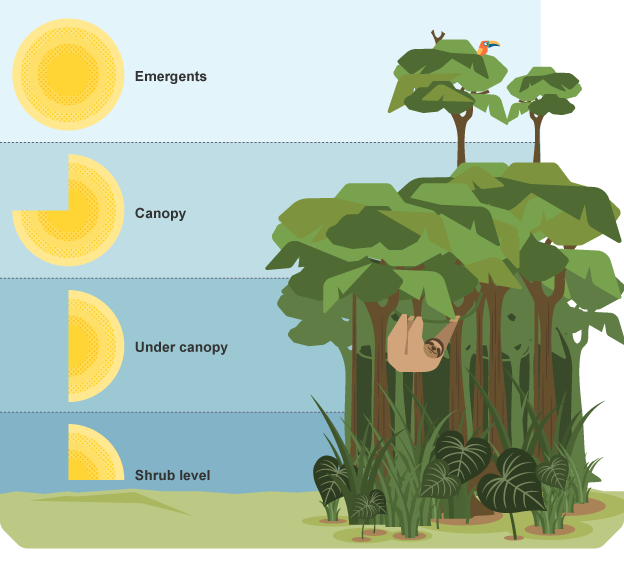Primate Ecology
1/25
Earn XP
Description and Tags
An overview of the ecological niches that primates occupy.
Name | Mastery | Learn | Test | Matching | Spaced |
|---|
No study sessions yet.
26 Terms
ecology (as defined by Ernst Haeckel)
total relations of the animal to both its organic and inorganic environment; how an animal, a population of an animal, or their sympatric community relates to its environment
ecosystem
the relationship of a particular community of plants and animals and its non-living environment
abiotic
the non-living components:
water
atmosphere
soil
climate
climate
the encompassment of temperatures, humidity, and rainfall; these are affected by location (i.e. latitude, altitude, oceans); this in turn affects the plant community
biotic
the living component:
plant community
animals
Why are plant communities fundamental to ecosystems?
The abiotic features of an environment determine the types of plants that can be grown in that environment. This plant community determines what types of animals can be supported in that environment since animals depend on the plants for food energy.
What must all ecosystems have?
A place with an energy source and a means to transfer that energy into usable forms.
Ex. A rainforest has its plants as the energy source and the sun to initiate photosynthesis. This energy flow is the definition of an ecosystem.
food chain
the sequence of transfers of matter and energy in the form of food from organism to organism
trophic level
a group of organisms that occupy the same position in a food chain
autotrophic level
the producers which can directly use solar energy:
plants
algae
bacteria
heterotrophic level
the consumers who obtain energy either directly or indirectly from the plants
primary consumer
direct consumers of the energy source of an ecosystem:
folivores
herbivores
frugivores
secondary consumer
indirect consumers of the energy source of an ecosystem:
faunivores/carnivores
insectivores
omnivores
scavengers/decomposers
biome
a major ecological zone characterized by specific climates and the types of plants and animal life they support
What is the most common biome for many organisms in the order primates?
The tropical biome, located in between the Tropic of Capricorn and the Tropic of Cancer. However, a tropical ecosystem in Africa may look different than a tropical ecosystem in South America.
ecological niche
the place or function of a given organism within its ecosystem
niche separation
the process by which natural selection drives competing animals into different patterns of resource use, resulting in different niches; this allows multiple species to coexist sympatrically
Ex. In Gabon, West Africa, researcher found that 5 sympatric nocturnal strepsirrhines avoided competition by eating different foods and/or eating in different rainforest levels
Leibig’s Law of Minimum
Factor(s) which are limited in supply (food, water, space, etc.) will limit the size of the population and may affect behavior and other adaptations
Ex. Folivorous howler monkeys cannot eat many leaves that contain secondary compounds
What fruit has been essential to early mammalian diet and subsequently to most primate diets?
Figs, b/c they contain a lot of fiber, carbohydrates, and sugar
How does the environment select its biome?
Through climate and location. Temperature and precipitation along with the environment’s proximity to the equator determines the biome and day length.
tropical rainforest
high rainfall, high temperatures:
must have >= 100 in. (8 ft.) rain per year
constant rainfall every month
temperatures are consistently warm
evergreen trees are the most common due to strong leaf cellular structure
rainforest composition
emergent layer: highest of the treetops, much sun exposure
canopy layer: a level plane where branches don’t overlap
understory layer: branches and vines for suspensory locomotion
forest floor: the ground, very little sun exposure

What limitations in the rainforest drive primates to select for fit adaptations?
secondary compounds
mechanical properties of foods
food distribution
predators
secondary compounds
toxic compounds which can be poisonous if eaten in large numbers (alkaloids) or can disrupt digestion (tannins)
What does it mean for the mechanical properties of foods to have the ability to limit primate population growth?
The physical characteristics of foods can limit how primates utilize the foods. For example, sakis and uakaris adapted their dentition and mandibles to be very robust and strong in order to eat hard, unripe fruits and nuts.